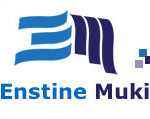When working with SQL databases, string manipulation is a common but often underappreciated task. Whether you’re building reports, cleaning data, or creating dynamic queries, knowing how to locate and extract substrings effectively is essential. One powerful SQL Server function designed for such tasks is CHARINDEX. Understanding how to use CHARINDEX can make your data queries both more efficient and more precise.
What is CHARINDEX?
CHARINDEX is a built-in SQL Server function that locates the position of a substring within another string. It returns the starting position of the substring if found, or zero if it is not found. CHARINDEX is especially useful when you need to validate strings, parse information, or extract key values from larger text fields.
The general syntax of the CHARINDEX function is as follows:
CHARINDEX ( expressionToFind , expressionToSearch [ , start_location ] )
- expressionToFind: This is the substring you are looking for.
- expressionToSearch: This is the string in which you want to search.
- start_location (optional): This tells SQL where in the string to start the search.
Basic Example
Let’s say you have a string and want to find the position of a particular word in it:
SELECT CHARINDEX('apple', 'An apple a day keeps the doctor away');
This query will return 4 because the word “apple” starts at the fourth character in the string. If the substring does not exist, the result will be 0.
Case Sensitivity in CHARINDEX
By default, CHARINDEX is case-insensitive if your SQL Server is using a case-insensitive collation. However, this behavior can differ based on collation settings. For case-sensitive searches, you must use a collation that supports this. For example:
SELECT CHARINDEX('apple', 'An Apple A Day', 1 COLLATE Latin1_General_CS_AS);
In the example above, the function will return 0 because the search is case-sensitive and ‘apple’ does not match ‘Apple’.
Using CHARINDEX with Other Functions
In real-world scenarios, you will often use CHARINDEX in combination with other string functions like SUBSTRING or LEFT/RIGHT to extract parts of a string.
Here’s an example that extracts just the domain name from an email address:
DECLARE @email VARCHAR(50) = 'user@example.com';
SELECT SUBSTRING(@email, CHARINDEX('@', @email) + 1, LEN(@email));
This will return example.com. The CHARINDEX function helps identify the starting point of the domain by locating the “@” character.
Performance Considerations
While CHARINDEX is efficient for small and medium-sized datasets, it may not be optimal for large-scale string searches, especially when used in WHERE clauses in SELECT statements over millions of rows.
Here are some tips to improve performance:
- Avoid leading wildcards during full-text searches, as they cannot make use of indexes.
- Use full-text indexing if you need advanced search capabilities across text-heavy fields.
- Limit your dataset before applying CHARINDEX whenever possible.
Common Use Cases
CHARINDEX is more than just a utility to find the position of a substring—it also helps support business logic and data validation within applications. Common use cases include:
- Detecting the presence of illegal or restricted characters in user inputs
- Parsing structured data like CSV values, emails, or URLs
- Building dynamic SQL queries by evaluating string patterns
- Validating formatting rules such as phone numbers or addresses
Limitations to Be Aware Of
Despite its usefulness, CHARINDEX has certain limitations you should be mindful of:
- It does not support regular expressions. Use LIKE or PATINDEX for more flexible pattern matching.
- Returns only the first occurrence of the substring. If you need to find all occurrences, you will need to loop or use recursive queries.
- It is limited to searching within VARCHAR or NVARCHAR data types.
Conclusion
Knowing how to use CHARINDEX effectively can make your SQL queries much more powerful and efficient. It is a reliable tool for locating substrings, validating input, and parsing content. While it is simple in syntax, its utility becomes apparent in complex string manipulation tasks and real-world data scenarios. When combined with other SQL functions, CHARINDEX proves to be a cornerstone in any SQL developer’s toolkit.

